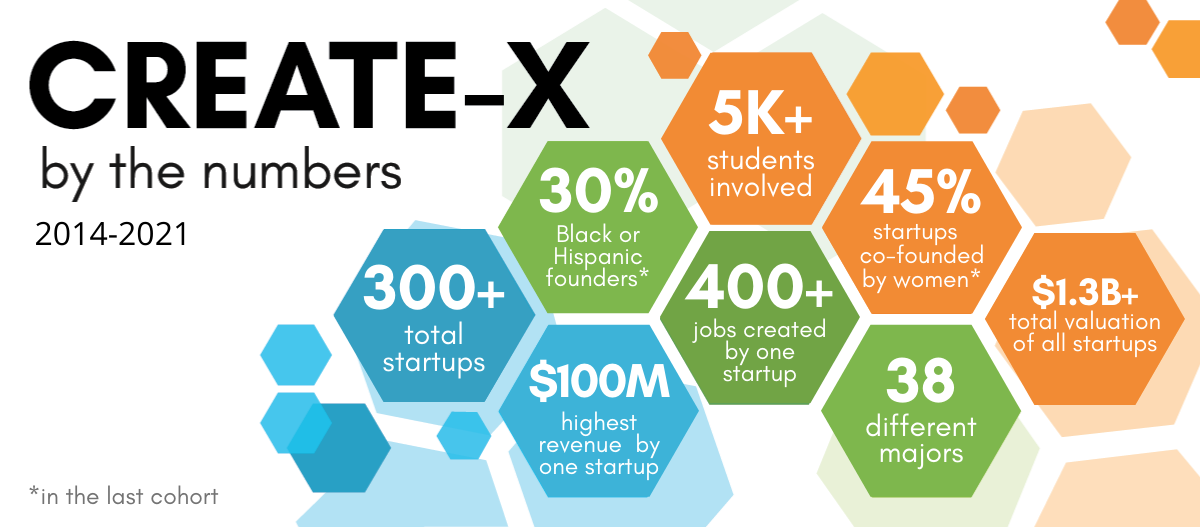Having grown from 8 to 80 student startups a year, CREATE-X is catching fire

All kids pepper their parents with questions. Sean Henry’s questions were a little different.
As an 8-year-old, he wanted to know how to link online payment transactions to his parents’ bank account. He asked how to ship packages and requested rides to the local UPS store.
These were the questions of an entrepreneur in the making, which is what young Sean was back in 2003. “I sold my Christmas presents on eBay, then used the money to buy broken computers and phones on Craigslist,” he remembers. “Then I’d fix them up and sell them online.”
In high school, he started another enterprise: buying small car parts and marking them up for resale in an ecommerce store. When he got to Georgia Tech in 2014, Henry was ready for the next great venture — but knew he had a lot to learn.
“As a freshman, I was thinking about starting a company,” he says. “I went around talking to every professor I could about entrepreneurship. And I got pointed to CREATE-X.”
The program had launched a year earlier as an experiment, with volunteer faculty, administrators and entrepreneurs guiding teams of students as they waded into the waters of entrepreneurship. From interviewing customers to building prototypes to deep-diving on financial and legal matters, CREATE-X students would undertake the mighty challenge of turning an idea into a marketable product or service.
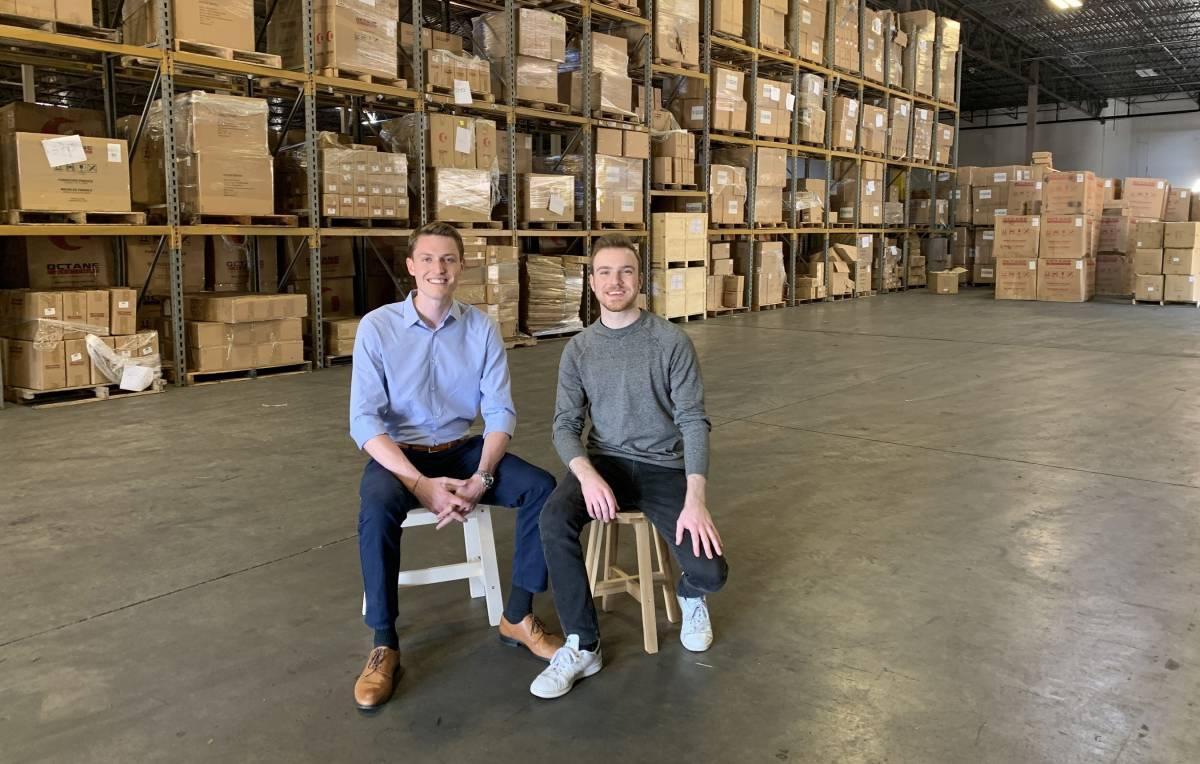
Henry entered the 2015 cohort on a team that wanted to explore a new way to track and lease available warehouse space in the supply chain. Henry had seen a need for such a service while working in an automotive manufacturer in Germany the summer after high school.
“Capacity in German warehouses wasn’t fluid, and the same was true here in the U.S. I was thinking there had to be a way to connect available capacity into a network, just like Air BnB and Uber did in other industries,” he says. “And there was a second problem where I worked, in that the ERP platform used to run the supply chain wasn’t at all integrated with the physical operations.”
To address these issues, Henry and friend Jacob Boudreau formed the startup Stord. The company’s cloud-based software opens up access to more warehousing, freight, and other aspects of the supply chain.
Five years later, Stord is turning heads as a leading cloud supply chain platform for retailers and e-commerce companies. It’s raised $205 million in four rounds of investment — one of the first checks (for $200,000) coming from Chris Klaus — and in September 2021 it reached unicorn status by being valued at an astounding $1.1 billion. The brands using Stord’s platform include Advanced Auto Parts, Owens Corning, and Dollar General.
CREATE-X too, is turning heads.
The first class in 2014 had eight teams. This year the program had 80, chosen out of more than 700 applicant teams. For the first time, 10 faculty teams were also admitted — out of 65 applying — to provide a new avenue for commercializing Georgia Tech research.
By necessity, the ranks of CREATE-X instructors and mentors have swelled, too; while some are now compensated, the majority continue to volunteer. And corporate sponsors have climbed aboard, creating a steadier revenue stream.
All of which is to say, the initial “experiment” has morphed into a fine-tuned enterprise that’s making an impact on legions of students — and capturing the attention of other universities around the country.
Creating Buzz
In his bestseller “How I Built This,” author Guy Raz makes the point that entrepreneurship doesn’t come naturally:
“It defies many of our most human instincts. Our desire for security. Our fear of crazy risks. Our tendency to go with the flow and not make too many waves. As much as we think of ourselves as unique individuals, we also like to fit in and to be chosen — by those who fit in and were chosen before us.”
Given how uncomfortable and scary entrepreneurship can be, the explosive popularity of CREATE-X seems hard to fathom. Georgia Tech Provost Steve McLaughlin, who was instrumental in forming the program, believes today’s students are drawn by a trifecta of motivators that color the startup experience.
“The book ‘Drive,’ by Daniel Pink, talks about how people are motivated by developing their mastery, working with autonomy and pursuing something that has meaning or purpose,” McLaughlin says. “So, when you create an environment that has all three of these, which is what CREATE-X is, magic happens.”
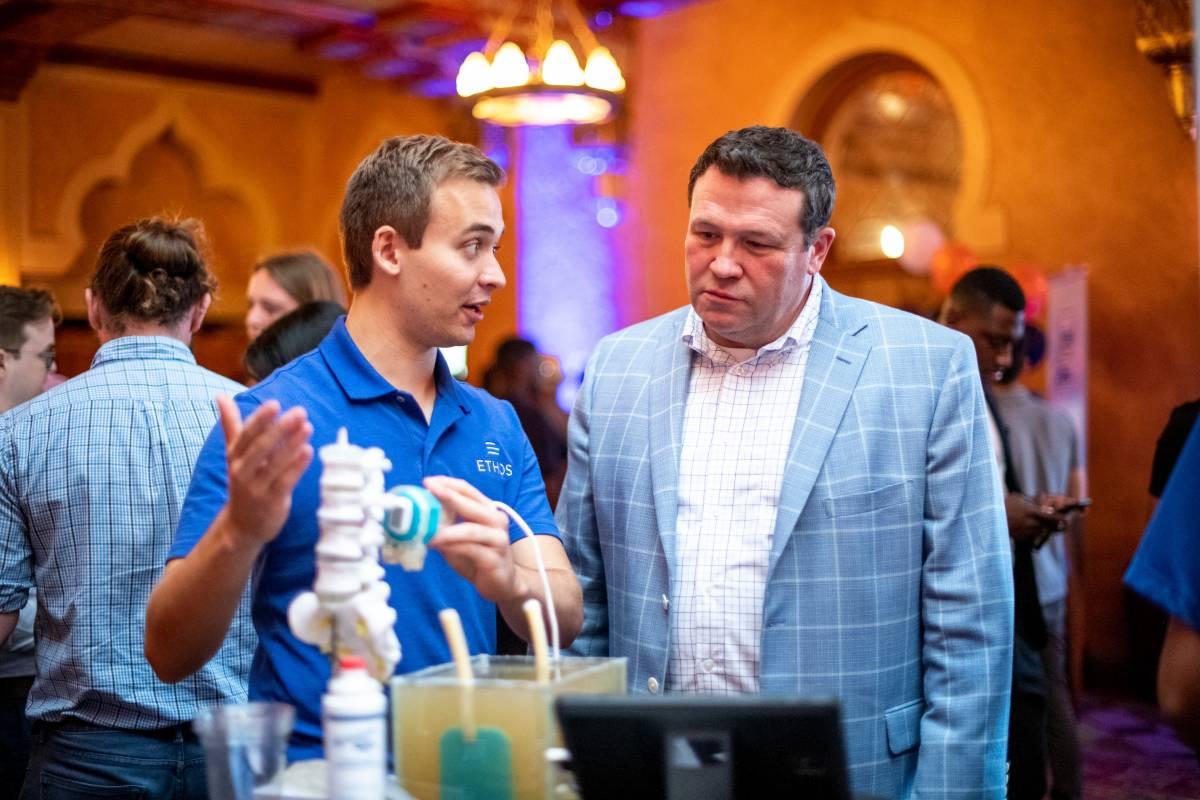
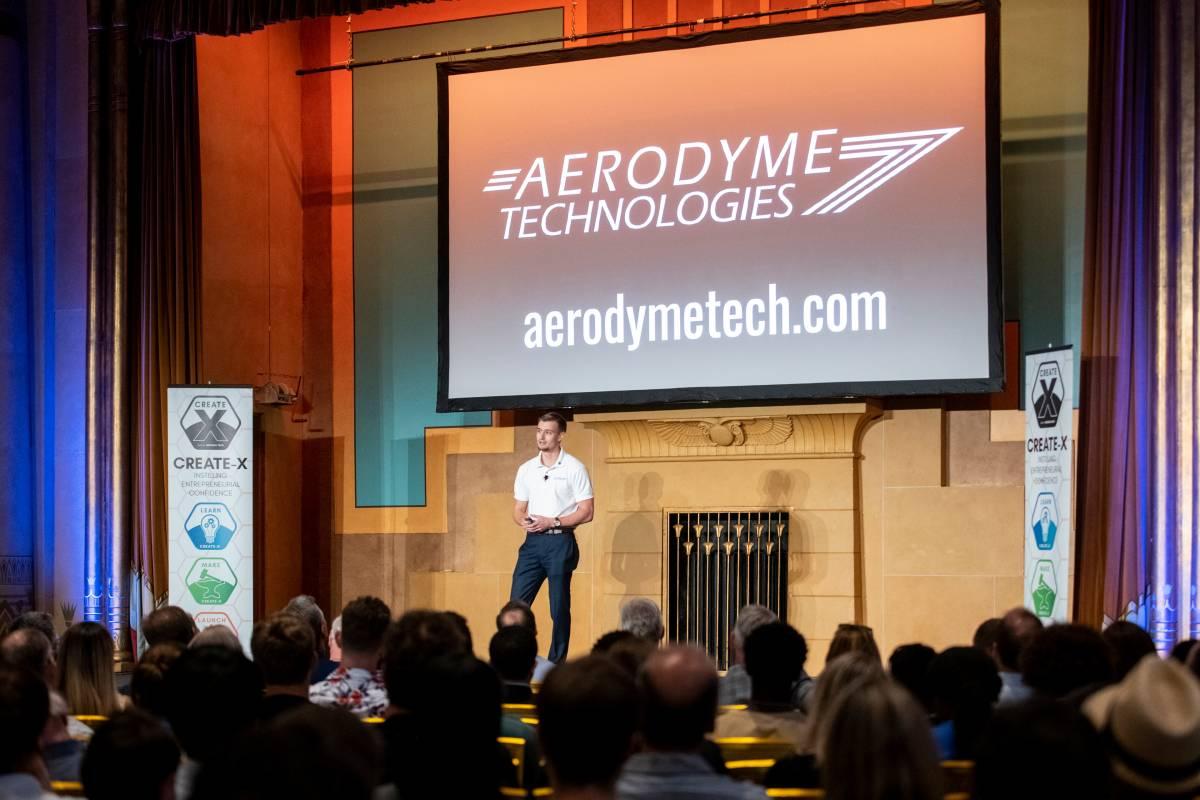
Chris Klaus, a benefactor and champion of the program – he donated $2 million to it in 2016 — believes the success of companies like Stord has a lot to do with the growth of CREATE-X.
“There’s a flywheel effect going on here,” says Klaus, who in 1994 launched the company Internet Security Systems from his Georgia Tech dorm room. “CREATE-X is now being talked about. You’re seeing some of the early companies turn into real companies with actual employees, making a real impact on the industries they’re in. And more and more students are asking, how do I get involved?”
Klaus’s view is shared by the co-founder of CREATE-X, Raghupathy “Siva” Sivakumar. “Now that people see what is coming out of the program, there’s an awareness that entrepreneurship is a good investment of time,” says Sivakumar, who today is Georgia Tech’s VP of commercialization and chief commercialization officer. “CREATE-X is now seven years old, and it’s produced good-quality companies.”
Sivakumar adds, “We had the vision of launching 300 startups a year by 2027, and we’re still on that trajectory. It’s kind of amazing that we’ve kept pace with those projections. I give all the credit to the companies coming out of CREATE-X and the students who go out and speak about their experiences.”
“We had the vision of launching 300 startups a year by 2027, and we’re still on that trajectory.” – Raghupathy Sivakumar
Creating Impact
Sivakumar would be the first to tell you that while successful companies are to be celebrated, CREATE-X has a larger aim: Helping Georgia Tech students develop something extra in themselves to prepare for the world after graduation.
“Georgia Tech has arrived at the mindset that entrepreneurial confidence is a life skill that students need to have,” he says. “Thinking like an entrepreneur does a world of good beyond the technical skills they’re getting from Georgia Tech. And we’ve heard many alumni say that this mindset is important.”
You might think Sean Henry hardly needed to build entrepreneurial confidence, having created two money-making enterprises before stepping onto a college campus. Yet he describes the formal process of developing a product and shaping a company around it as entirely different from creatively making money.
“I had the confidence to try things,” Henry says, “but they teach you that entrepreneurship is all about the unknown unknowns. It’s mentally hard to go out and learn what you’re not even sure you’re supposed to know.”
Karthik Ramachandran, who for a decade has taught courses in product development and innovation in Georgia Tech’s Scheller College of Business, echoes that sentiment. “Georgia Tech students are phenomenal at getting things done,” he says, “but they’ve always had a playbook, from kindergarten to college. Doing a startup is fundamentally different. There’s no playbook.”
From his vantage point as a CREATE-X instructor and mentor the past four years, Ramachandran has had a front-row seat to the impact the program has on students. He says: “These students tend to be very shy and tentative on day one, but they’re so much more confident at the end of summer Startup Launch,” the third and final stage of the program. “That’s because they’ve spoken to so many people, and a lot of those conversations didn’t go as planned. Yet they still figured out how to make something out of it all.”
Zea Khorramabadi and Cassie McIltrot exemplify his point. The two co-founders of StrideLink, which offers a wearable device to track a person’s gait, are hardly introverts. But both say CREATE-X awakened a way to listen to and connect with people.
“Talking to customers wasn’t uncomfortable to me, but listening was, actually,” says McIltrot. “In customer discovery, my first 10 conversations were not very effective because of the way I was holding the conversation. I had to learn to really listen and dig deeper to get information that was helpful.”
Khorramabadi agrees. “I think I had to develop a little more emotional intelligence,” she says. “I really love design, and I learned good design requires you to have empathy for the person you’re designing for. It requires you to drop the ego. CREATE-X required these conversations, and that made me look at design in a completely different way.”
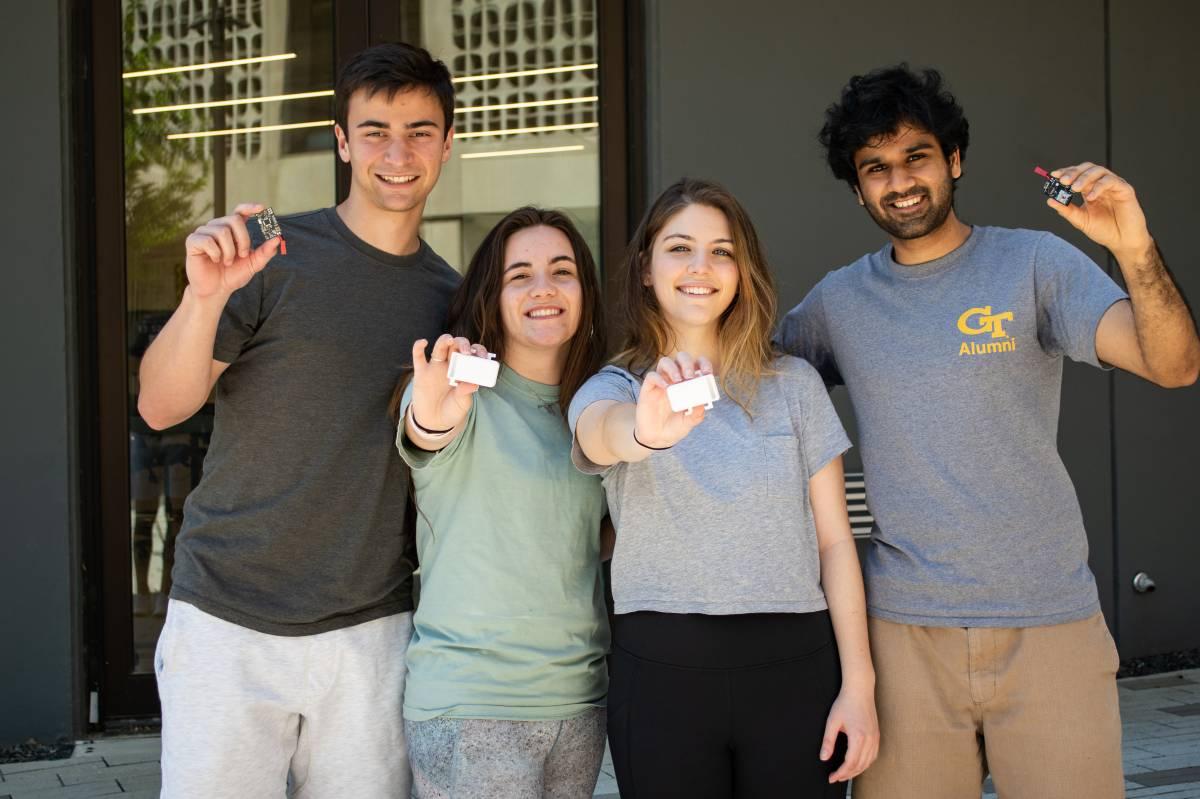
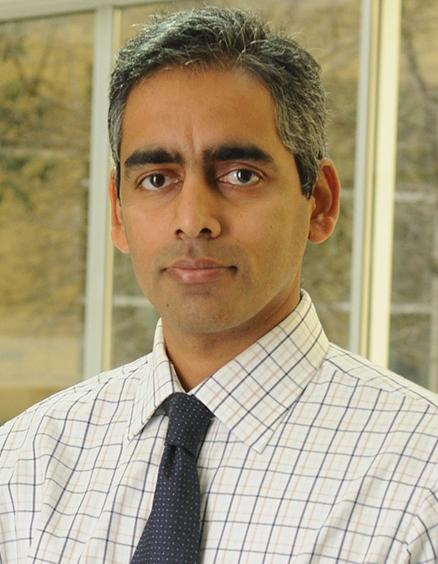
Creating Resonance
If there is a signature lesson from CREATE-X, it is surely how to listen to the marketplace. While the program is multi-faceted and multi-disciplinary, its emphasis on customer discovery – asking, listening, understanding, over and over and over – opens the eyes of participants and helps them avoid the pitfalls of so many entrepreneurs.
Exhibit A in this regard is Seth Radman (B.S. ME, ’17), whose startup Crescendo has the distinction of being the first CREATE-X company to be acquired by another company. Like Sean Henry, Radman had notched a couple of side ventures before joining CREATE-X in 2017. While those experiences gave him confidence, he acknowledges being a bit lost when he started CREATE-X.
“I learned early on I really had no idea what I was doing,” he recalls. “In college, it’s always, ‘here’s a problem, now you give me the correct answer.’ But entrepreneurship is backwards. You have to find the problem that needs to be solved.”
The running head start Radman had going into CREATE-X was Plutonium Apps, an enterprise that developed all kinds of apps for clients. One of these, he thought, had potential to become a company. It was an app that improved synchronicity in metronomes – devices that beep or click – for musicians separated by distance, such as marching bands on a field.
The more Radman listened to the marketplace, the clearer it became that the app alone wasn’t sufficient for a business model. He and his CREATE-X teammates needed to come up with something more.
“We traveled all over the Southeast to meet with band teachers in person to understand the technology they’re using in the classroom and the challenges they were having,” Radman recalls. “I think I hold the record for most pivots for a CREATE-X company.”
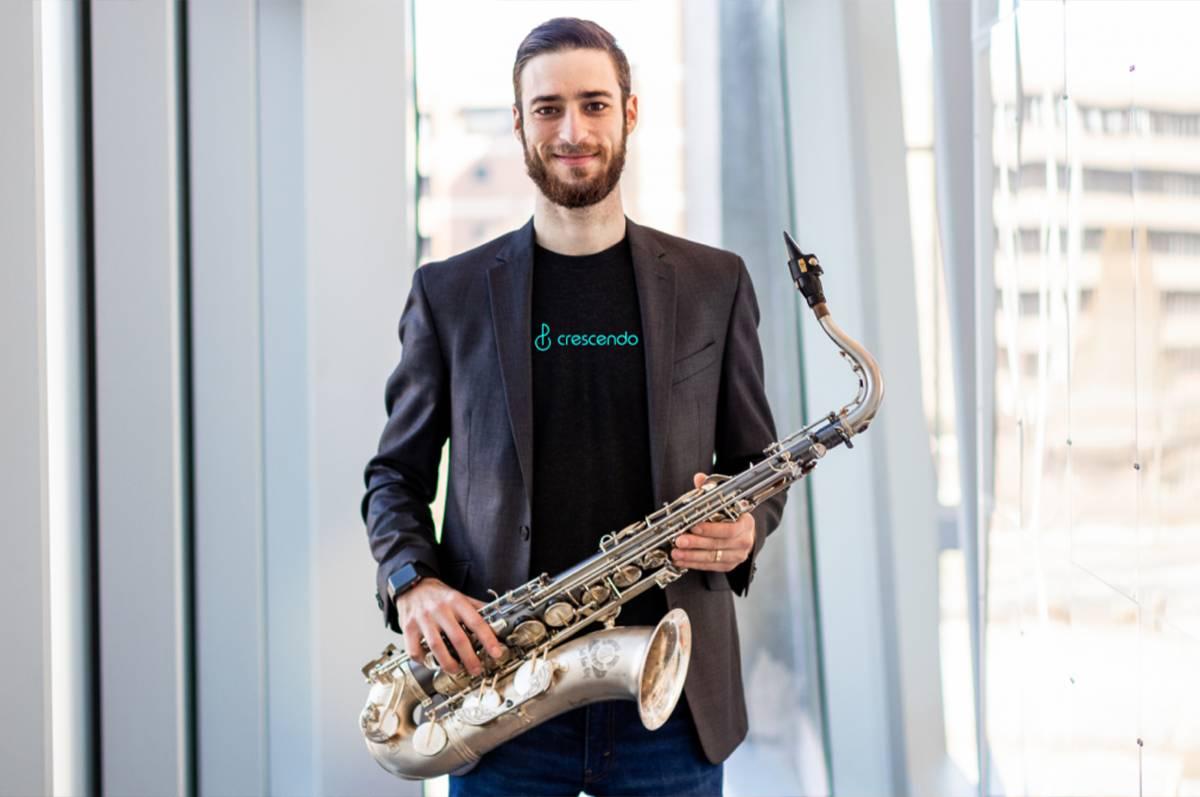

Eventually, Radman and his team landed on an app that could really help musicians learn to play. The app read sheet music and played the music as it was supposed to sound; it then recorded the musician playing the same music and provided feedback on the musician’s performance. They branded the company Crescendo.
Crescendo grew to a million users but hit a roadblock with licensing. While it was fairly easy to get rights to classical music, Radman says “students want to learn to play songs they know and like.” Getting rights to contemporary music loomed as a big, complicated challenge.
The company Ultimate Guitar had the rights to a vast trove of such music. They heard about Crescendo and saw the potential of the startup’s algorithm in one of its apps that taught playing guitar. “They found their guitar players were getting better faster with the app,” Radman says. “They also discovered that people enjoyed learning music more when Crescendo was part of the lesson.”
Ultimate Guitar purchased Crescendo in 2020, providing a new way for millions of musicians to learn how to play songs they love. Radman stayed on as an advisor for well over a year, then left to help build another enterprise – Infinite Giving, which guides nonprofits as they use modern financial technology to increase donations.
As for CREATE-X, Radman hasn’t left that behind. He has served as a coach for the past four years and has been an advisor to over 100 startups going through the program
“It was a life-changing experience for me, but for someone like me and others who have built companies, that’s just one path,” Radman says. “For others who get hired by a company, and then take a strong leadership role in technology or innovation, that’s just as important. I have yet to meet someone who hasn’t had a radical experience in CREATE-X.”
*Editor's note: All photos for this story were taken prior to updated mask guidance issued by Georgia Tech.
